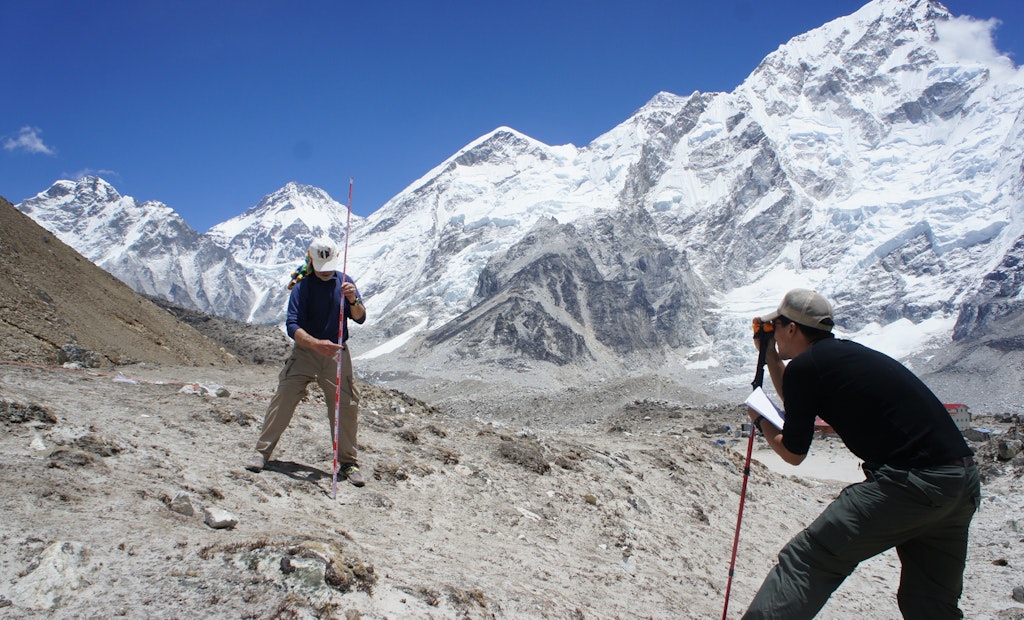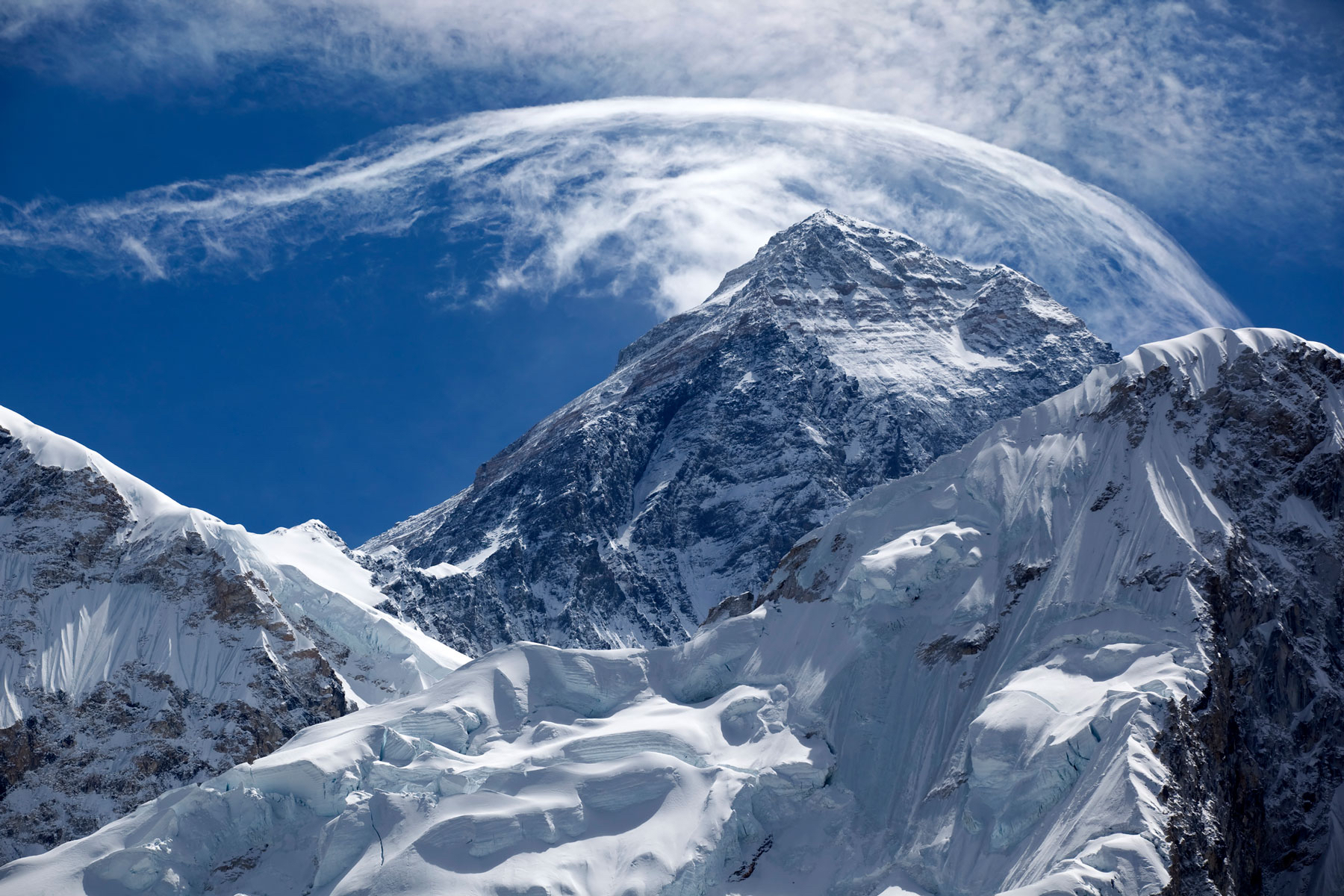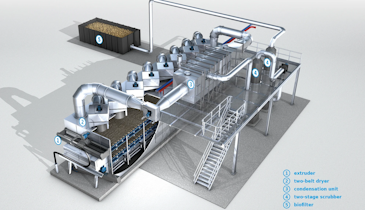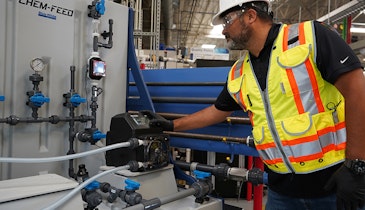Interested in Treatment?
Get Treatment articles, news and videos right in your inbox! Sign up now.
Treatment + Get AlertsComing up with a way to handle 12 tons of waste with simple equipment that can be purchased regionally might not seem like a huge challenge — unless the region in question is a small village on the slopes of Mount Everest.
Mount Everest has enamored climbers as the pinnacle of achievement for decades, and today the amount of human waste dumped annually has reached an all-time high.
Garry Porter and Dan Mazur started the Mount Everest Biogas Project to develop a solar-powered, modular biogas digester to deal with the massive amount of human waste collecting on the mountainside, generated by mostly Western climbers.
“It’s their land, but it’s the Western climbers who are doing this, because there’s no other solution. There’s no treatment, there’s nothing. Because they’re very remote, very poor,” Porter says. “It’s an environmental issue, and it certainly is an image of Mount Everest that we don’t want to see.”
Starting the project
In addition to spending over 30 years as a Boeing engineer and project manager, Porter has climbed Everest four times.
Upon reflection, the achievement was marred by recognizing the negative effects climbers leave in their wake.
“When you come off that mountain and that experience, you’ve got to be struck by seeing what you left behind. There’s a conflict. When you’re there, and you’re coming off of that climb, you’re so focused,” Porter says. “Then when you get home, and you start thinking, it strikes you — this is not right.”
Co-founder Dan Mazur has been a guide at Everest on and off for decades. The two met after Porter read about Mazur pulling a stranded climber off the mountain. They both live in Washington, and decided to get together. They connected over a mutual frustration with the state of waste disposal on Everest.
“We’re guests in Nepal. I enjoyed it as a gift, and yet I left a mess,” Porter says. “We recognized a problem, and asked, is there something we can do?”
A challenging design
The trick of this project is that the biodigester has to be close enough to base camp for feasible waste transport. That means the slopes of Mount Everest, where temperatures go below zero even in the warmest months of summer.
“We put theory to test, to say, will that human waste break down and produce methane gas?” Porter says of developing the design. “The answer was yes, it will work — if you can maintain a temperature between 20 and 30 degrees Celsius.”
The project worked with Kathmandu University to test waste digestion at the temps in question, and is working with them again to test the effluent.
Another challenge was designing the project using only parts that could be found in that region, and making sure the whole thing could be maintained and run by the Nepalese government.
“You can’t have a fancy, sophisticated solar panel that’s available in New York. It takes too long to get there, they’ve got to be available, and we’ve got to have support, locally,” Porter says. “The design criteria was everything had to be off-the-shelf, low-tech, available in Kathmandu. All the materials and labor will be Nepali. We’ve got to be giving back to Nepal.”
As the point person for coordinating on the Nepali side, Mazur’s contacts in the area have been valuable in gaining support for the project.
“We have an official agreement with the Nepali agencies,” Porter says. “They’ve agreed that we can build there, and more importantly, they will own it. When we’re done, and demonstrated it works, then we will turn the keys over to them.”
Porter’s team of volunteers will continue to provide technical support as needed, but functionally will leave operation of the digester to the locals.
They decided on a 6-cubic-meter digester, heated by a battery array, powered in turn by an 8.5 kW solar panel array. A water collection system on the roof of the containment structure, which is a simple one-story shed, will provide the water needed to mix into the waste at a 1-to-1 ratio. Then the mixture is heated to the necessary temperature with a resistance coil, and that heat maintained.
In theory, the digester will produce usable effluent and methane, as well as potential surplus electricity from the solar panels.
“There’s going to be operational problems like we can’t even imagine, because we’re in a very hostile environment, but I think there’s an economic benefit,” Porter says. “In addition to just the unsightliness and the environmental issue, there’s an economic value to the waste products.”
Help wanted
It took eight years to develop the design for the project, but now it is complete and the volunteer coalition is ready to start building. They already have contractors lined up — now all they need is funding.
Porter is looking for support from the wastewater industry, and the project needs all the help it can get.
“We need people in the industry that might take an interest and say, ‘you know, I’d like to put my name on that, or I’d like to support this,'” Porter says.
A $5,000 grant accompanied a Mountain Protection Award that the project received from the International Climbing and Mountaineering Federation, but they need $500,000 to bring the project to completion.
“The human waste coming off of base camp is dumped because they don’t have any alternatives,” Porter says. “Right now, they’ve buried or dumped this stuff in pits, and it doesn’t break down. Then it gets hit by the spring rains, and it flushes, so it’s in the ground. What we’re talking about is stopping that.”
They hope the design can provide inspiration to other countries with similar problems as well.
“It’s an open-source design, so our intent is that it be replicated elsewhere. They’ve got the same problem on Denali. We’ve got the same problem on Mount Rainier. They can fly it out, but it’s very expensive,” Porter says. “We’ve had contacts from other countries say, ‘We would like to get involved, when you’ve got the first one up and running.’”








